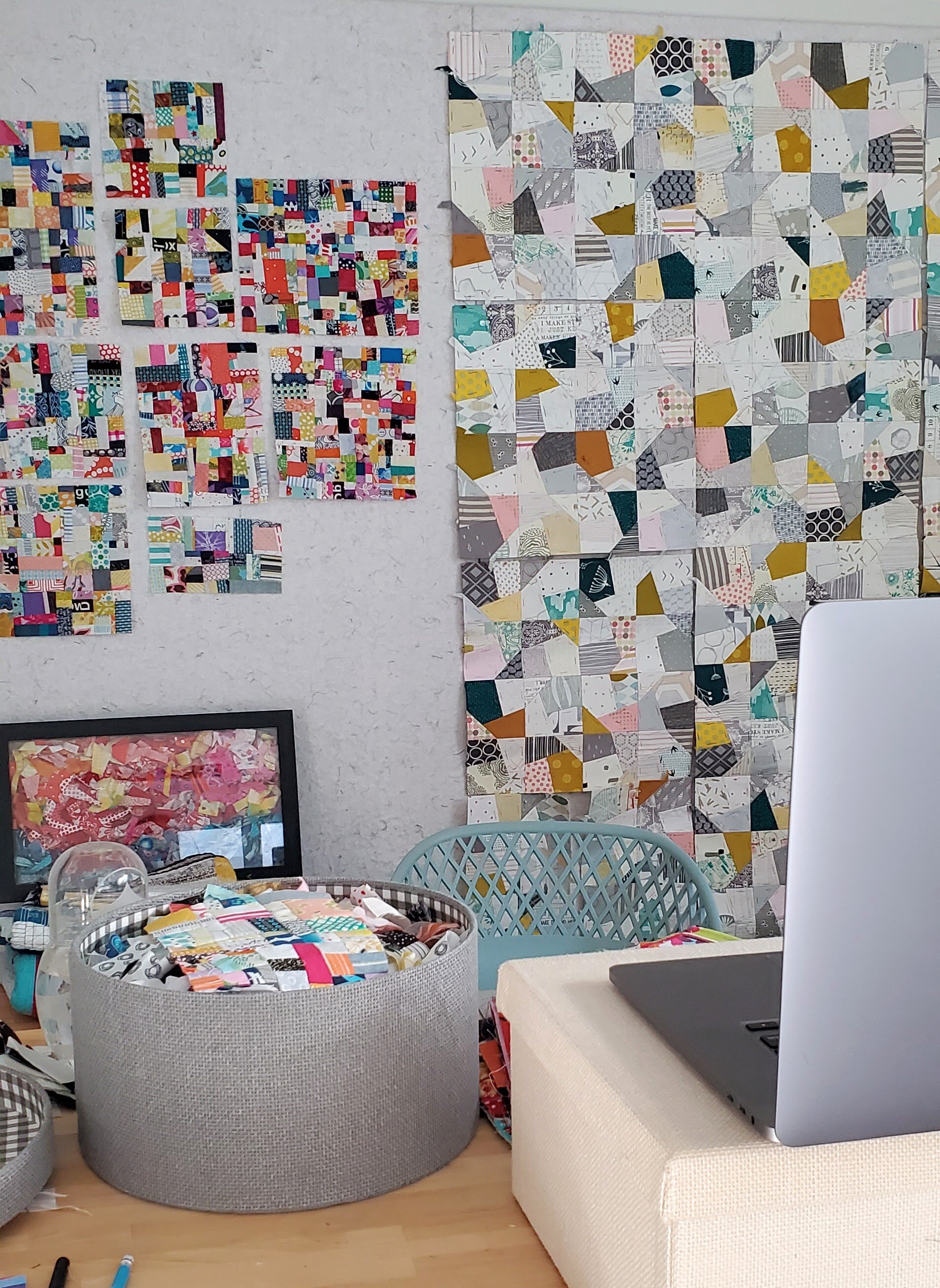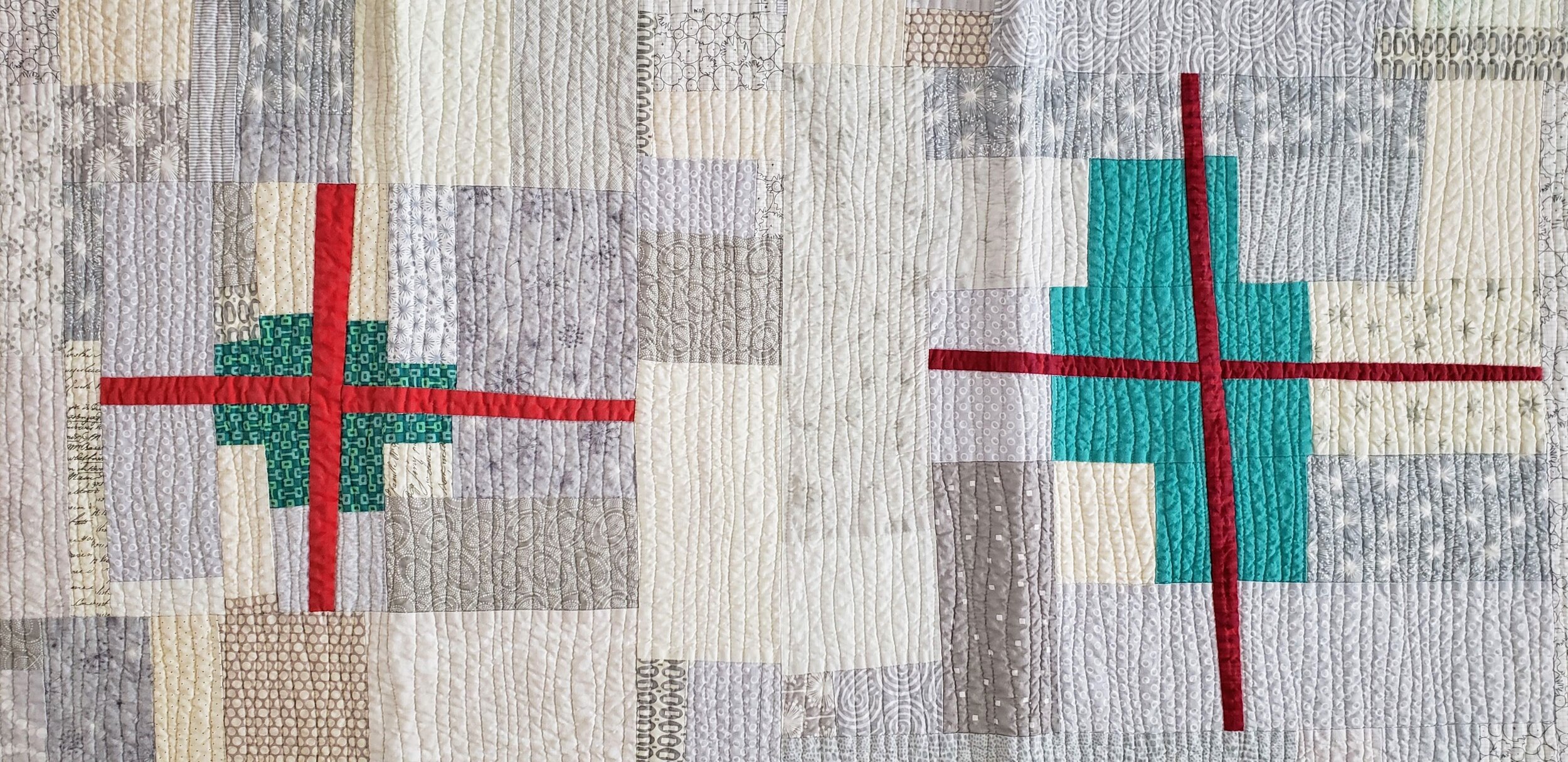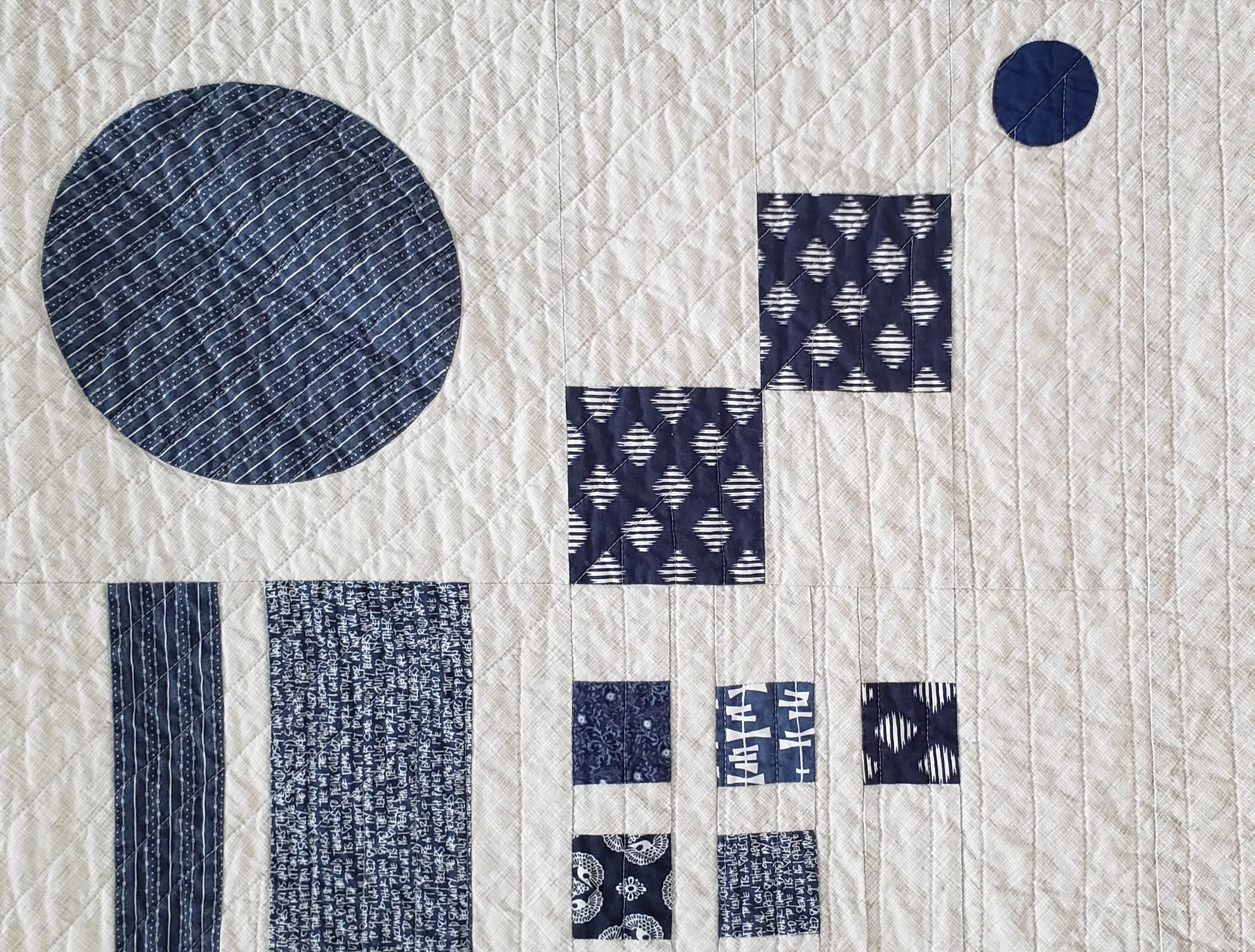Wrapped up my last virtual workshop of the year this past weekend. What a whirlwind fall it’s been! Two of the most popular classes have been HOME and Make Words Not War. HOME is a more focused version of the other but both are about making Improv letters and using intention in our improv piecing.
As I developed samples for the HOME class a collection of blocks grows. Different text styles, different piecing techniques, and different homes.
A while back I asked followers on Twitter what home means to them. Interestingly, no one mentioned a physical space. It was more about a feeling - of warmth, safety, comfort, love, a deep breath. I’d always envisioned these blocks as representative of a physical space, so it presented a design challenge. It got me thinking about the different physical spaces that can be home - an apartment, a bed, a hearth. And about the non-tangible feelings. Not sure how to represent the latter, but I am working on alternatives to a single family dwelling.
This particular block started in a workshop with Keystone Modern Creative. It was about showing a few different ways to use curves in making the letters. Then that O happened. Doesn’t it look like a flame? That got us talking about the hearth of a home, the idea of warmth and comfort. With input from students I picked the fabric to make the tile surround and mantle.
Home really is the heart of life at the moment. For good and bad. I realize that for so many it is not safe place, not a place of respite. It can be scary or boring or dangerous or not even there. I’ve decided to take the HOME blocks I make for these workshops and turn them into a quilt come summer. After that it will be used as a fundraiser. I will also donate a portion of my earnings from each HOME workshop. So the more workshops I do, the more potential for fundraising.
Not exactly sure how this will all unfold, but I want the money to go towards a shelter that helps those finding home. I am open to suggestions, but will likely pick a local option.
Thank you so much to everyone inspiring these. Thank you to everyone staying home, staying safe.













